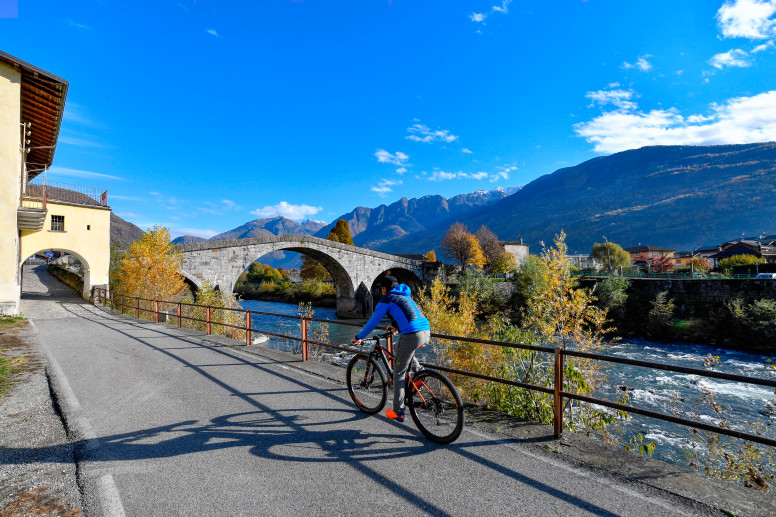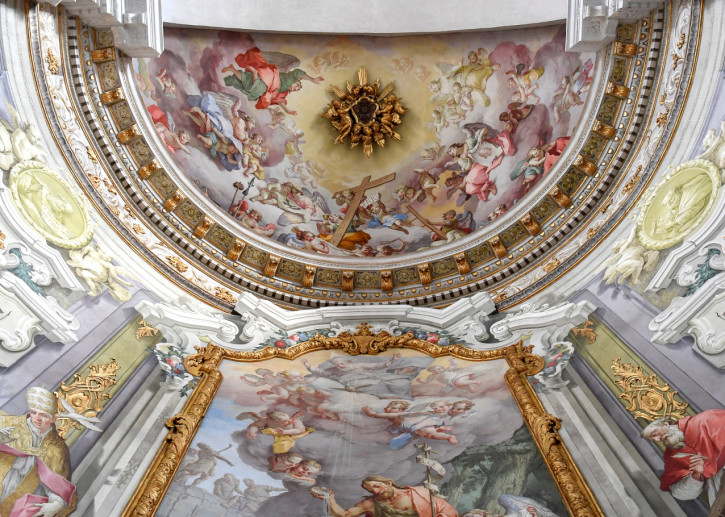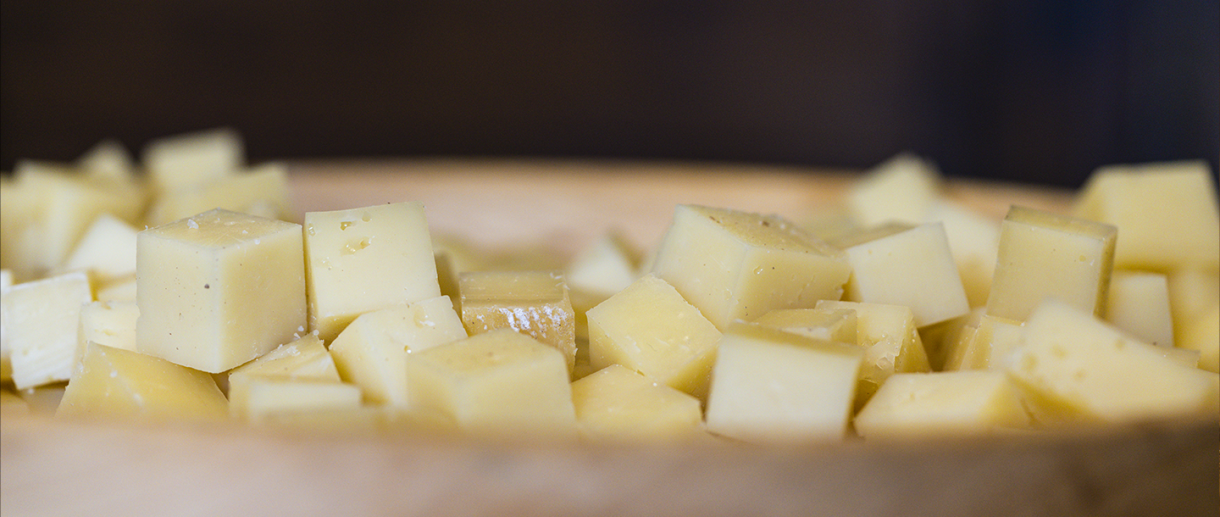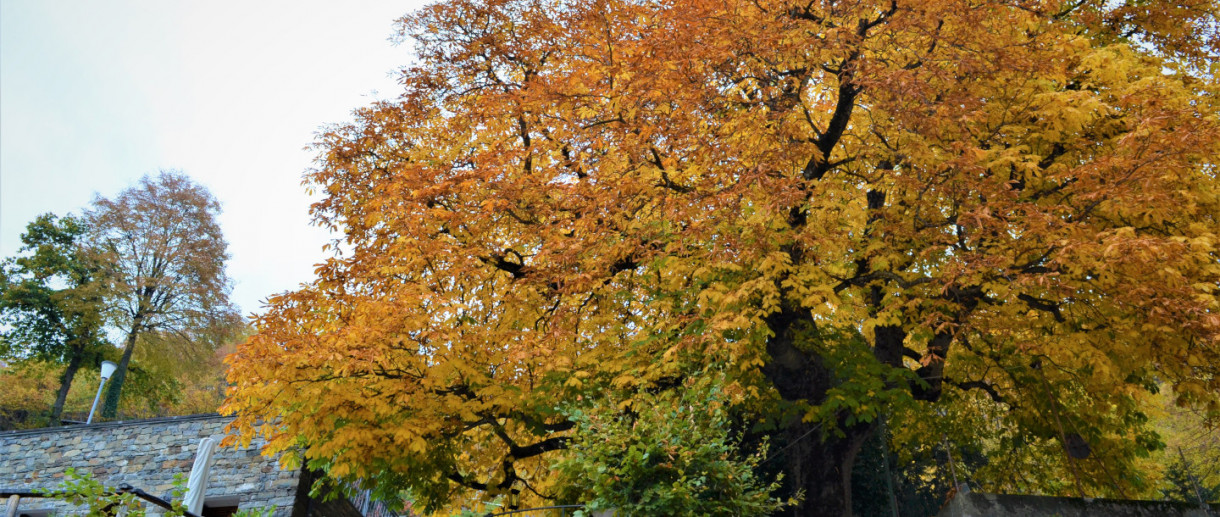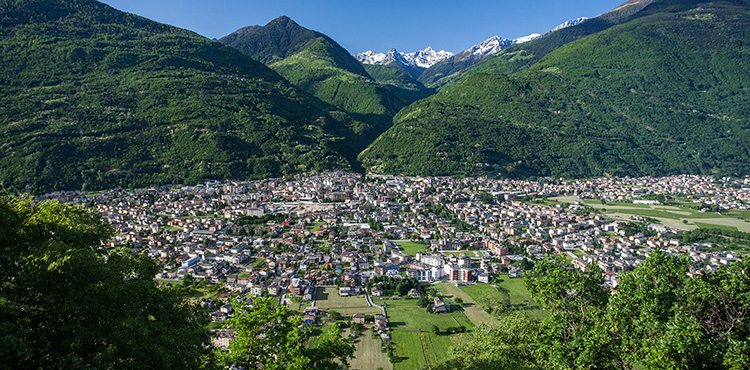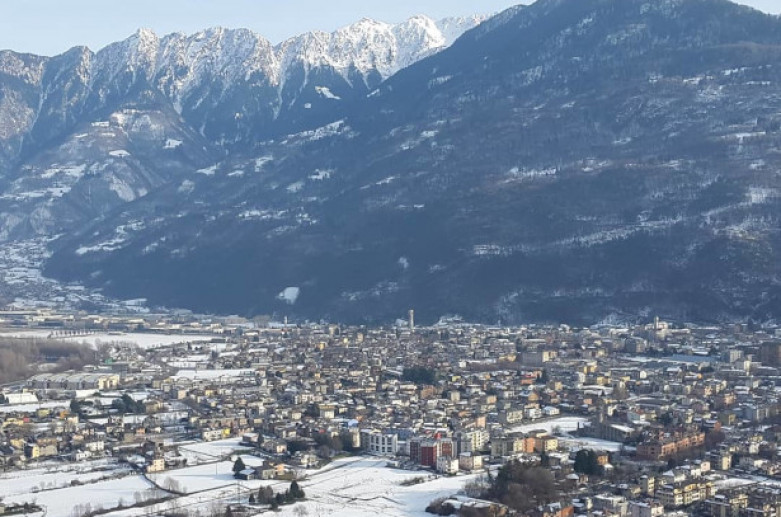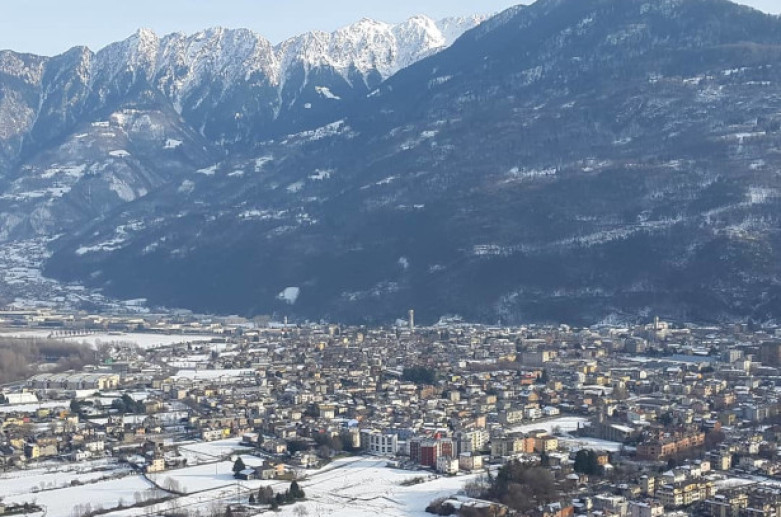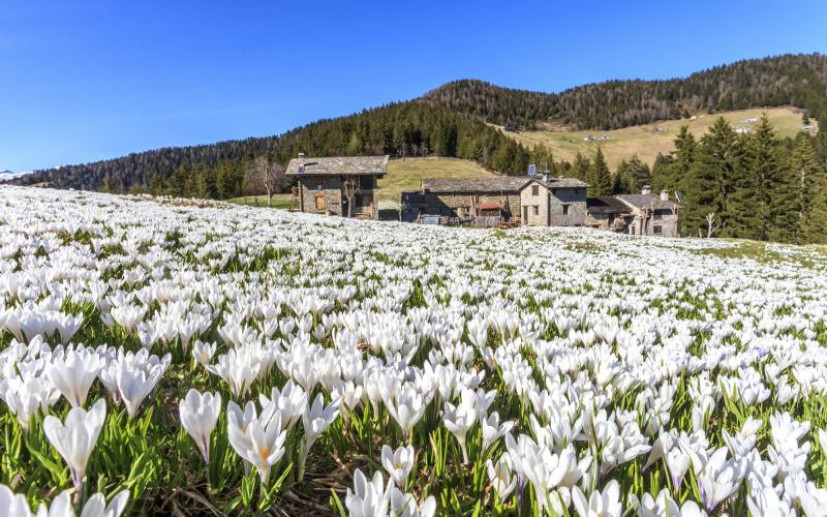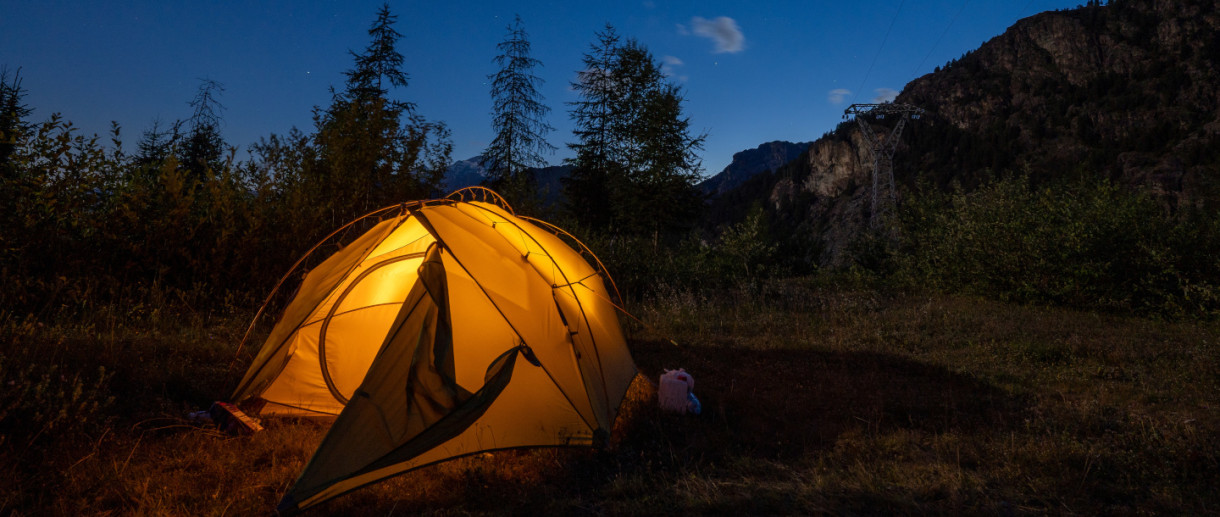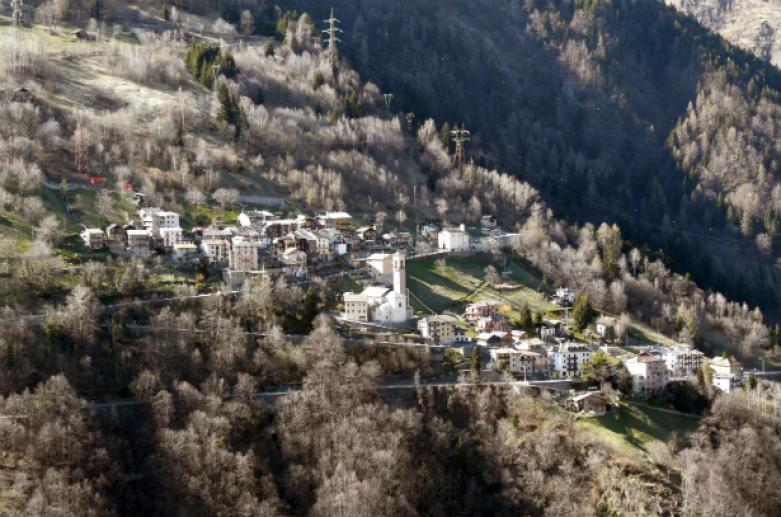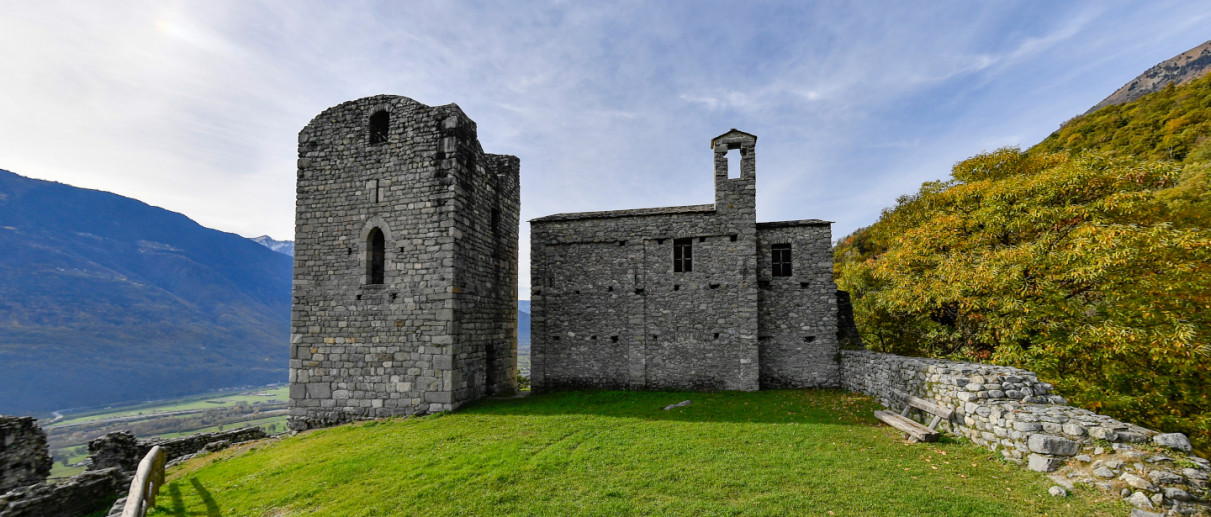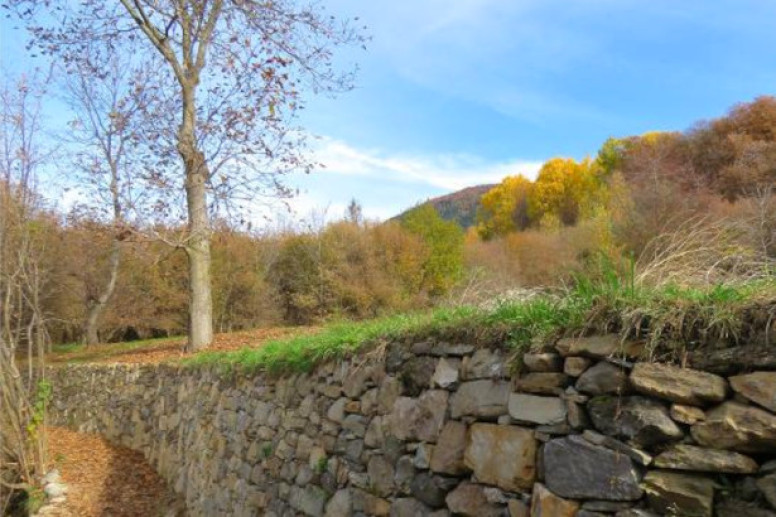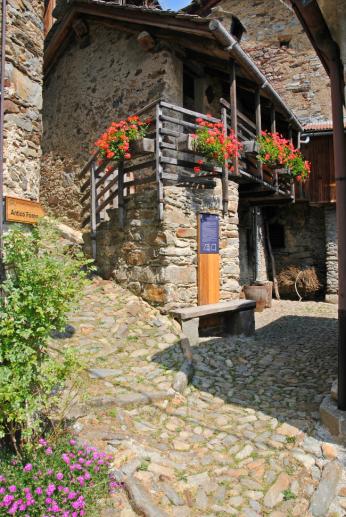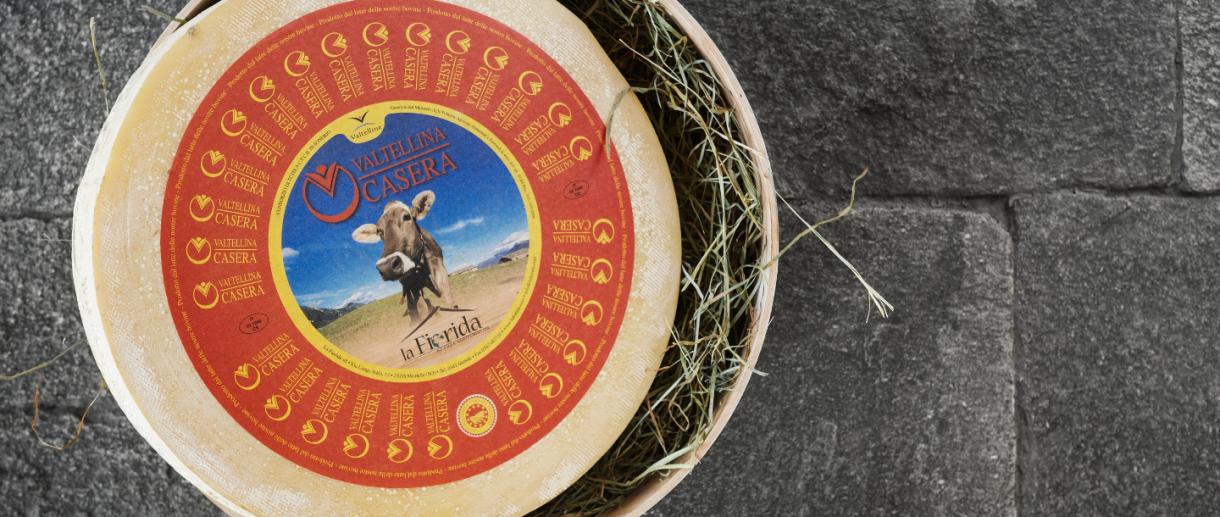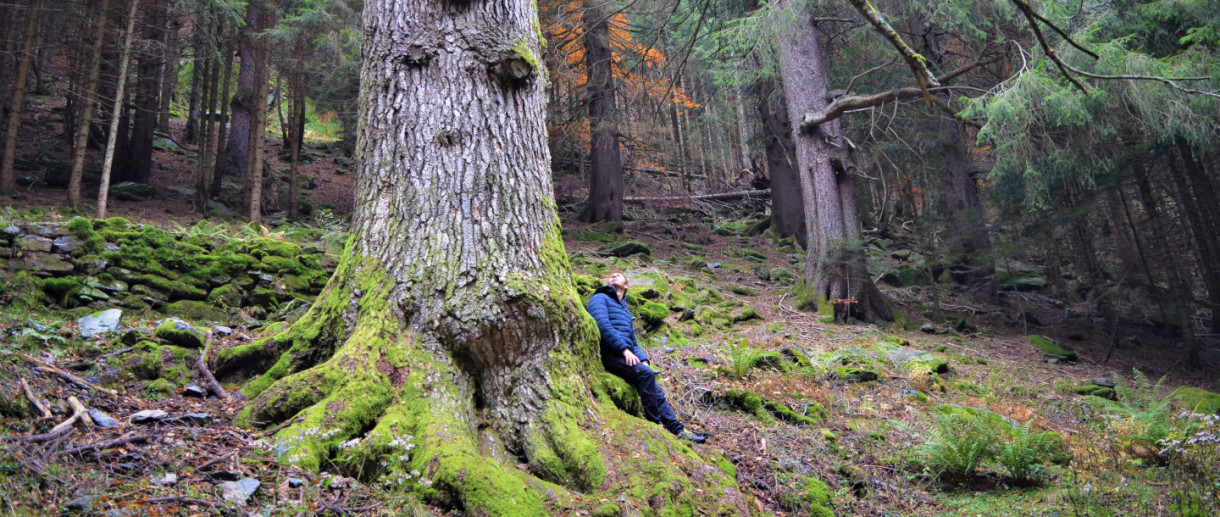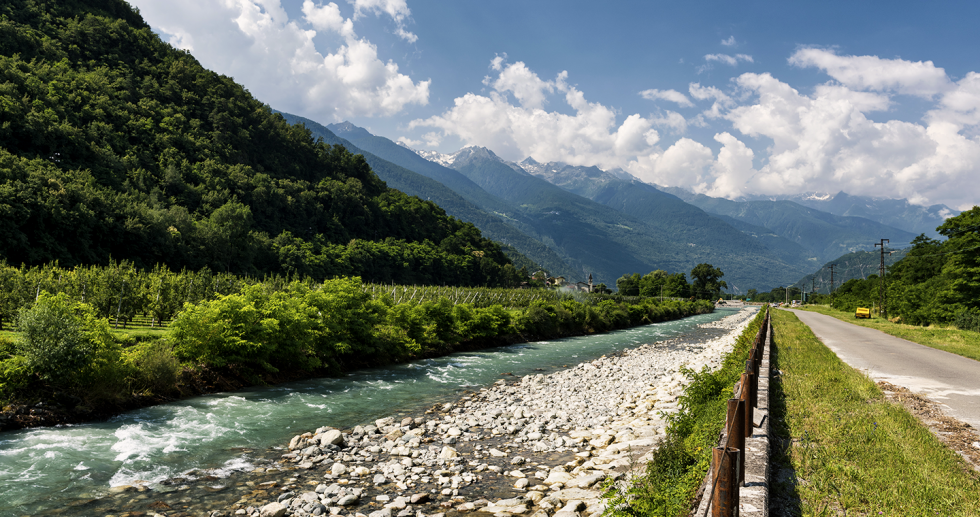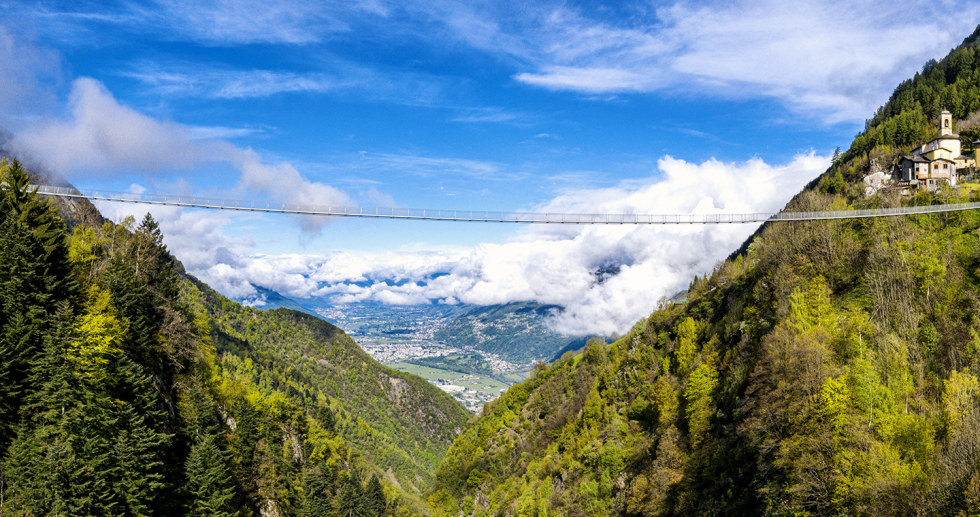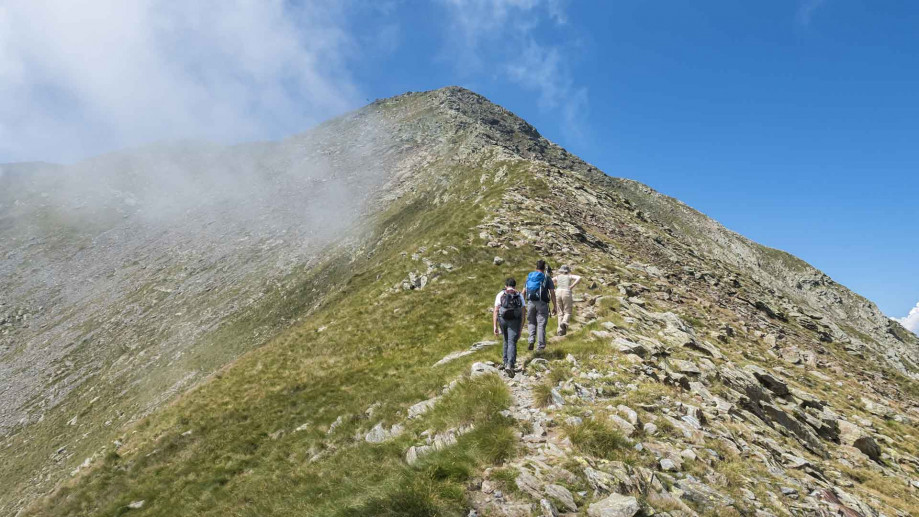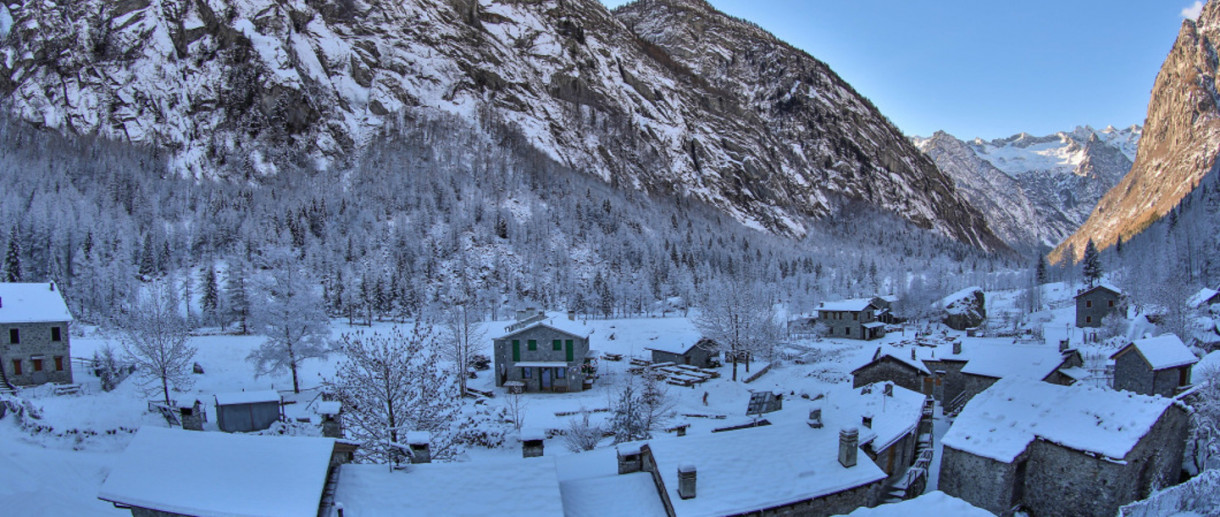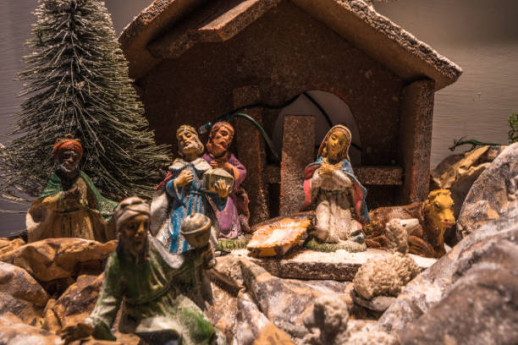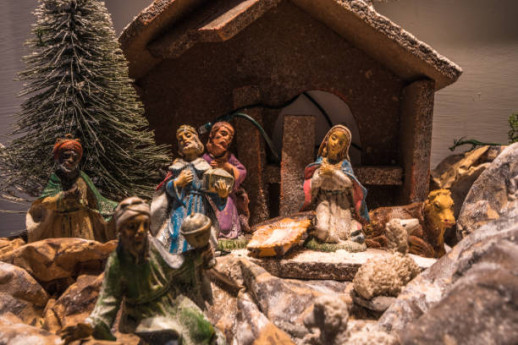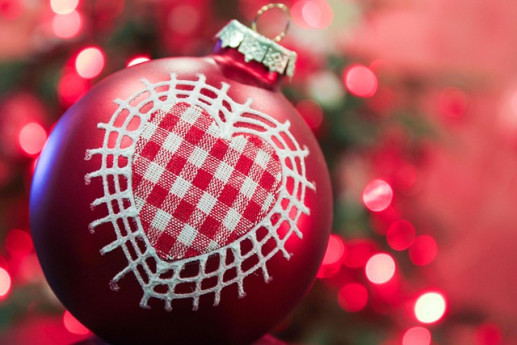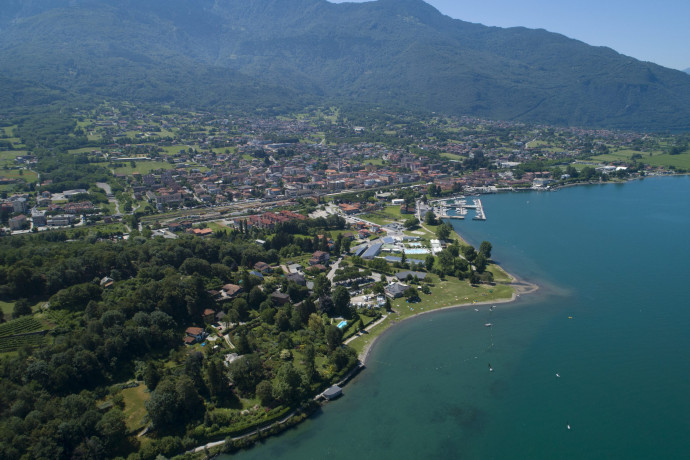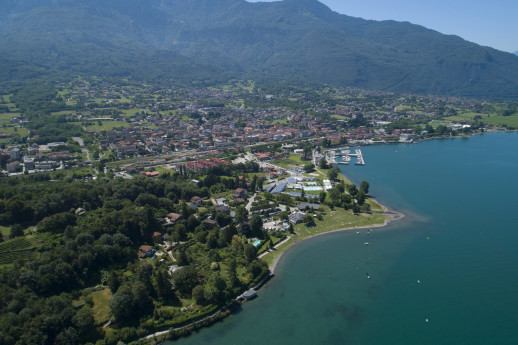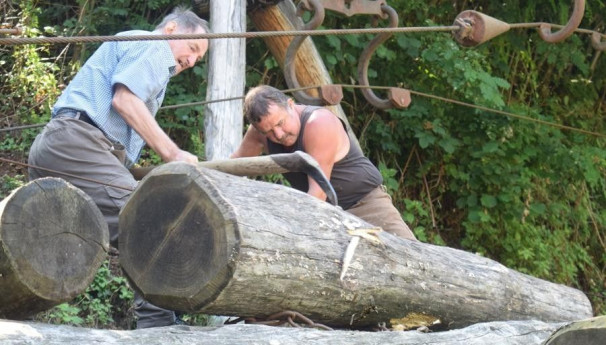- Art & Culture
Homo Salvadego Museum
A stone's throw from the parish church of Sacco in Valgerola, an old building, until not too many years ago used as a stable and barn, houses the Homo Salvadego Museum.
On the second floor, a door surmounted by a cartouche with auspicious writing and the Holy Trinity leads to the delightful "Camera Picta." The interior walls are painted with stencil decorations, floral motifs, and cartouches with Gothic lettering, partly in the vernacular and partly in Latin, bearing moralising proverbs and mottos.
There is no lack of figurative parts: on one wall a panel with the Pieta and St. Anthony Abbot. On either side of the entrance door is an archer ready to shoot his dart, on the other a character with a hairy body and flowing beard. Flaunting a gnarled staff he reveals his identity through a cartouche placed like a cartoon: "Ego sonto un homo salvadego per natura, chi me ofende ge fo pagura." This is one of the most beautiful images, so far documented, of Homo Salvadego. A character who is not only a local phenomenon, but a true symbol of Alpine peasant culture.
The frescoes, dated May 18, 1464, are the work of the masters "Batestinus and Simon," possibly from the Baschenis of Averara, a family of itinerant painters. Of the patron only the name is known: Agostinus De Zugnonibus. The most plausible hypothesis is that he was a notary; he was certainly a person of financial means and good culture. On the upper floor are a number of exhibition panels highlighting the spread in the Alpine context of architectural, pictorial and other expressive examples similar to that of Sacco. In addition, since 1988 the property has been owned by the Comunità Montana Valtellina di Morbegno, which oversaw its restoration and transformation into a specialized museum.

